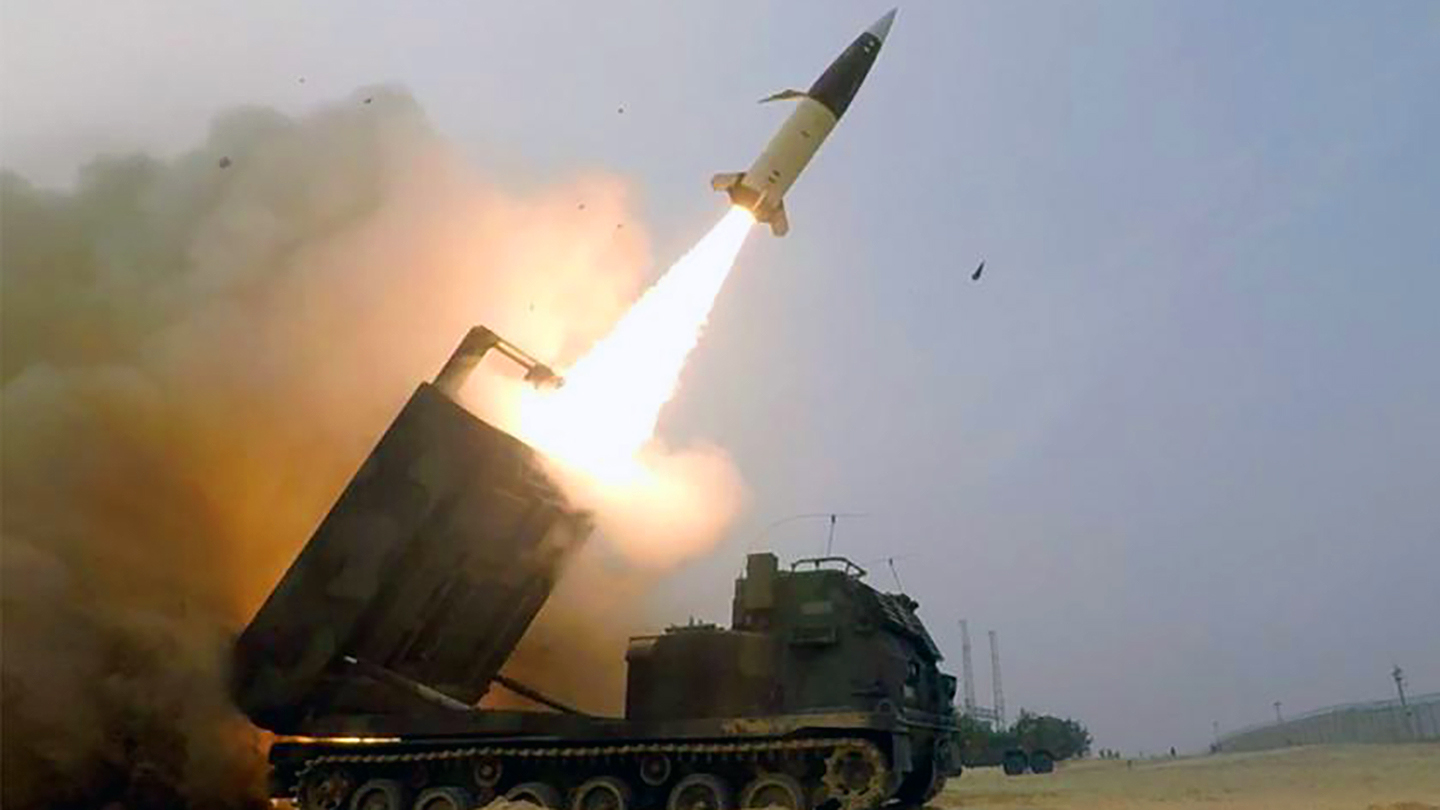Apparent attacks on two airbases in Russian-occupied Ukraine provide the first major signs of the use of the U.S.-made Army Tactical Missile System (ATACMS), a short-range ballistic missile that Ukraine has been promised, but which it is not previously known to have received. In the past, The War Zone has pointed out that airfields packed with aircraft are exactly the kind of target that would be ideal for the cluster-warhead versions of these missiles.
Editor’s note: See latest updates at the bottom of this story.
For months now, there have been reports that deliveries of these systems to Ukraine have been imminent. A report today in the Wall Street Journal states that “A small number of the missiles have been secretly sent to Ukraine in recent days, where they will augment Kyiv’s capability to carry out long-range strikes at Russian forces during an important stage of its counteroffensive, according to people familiar with the matter.”
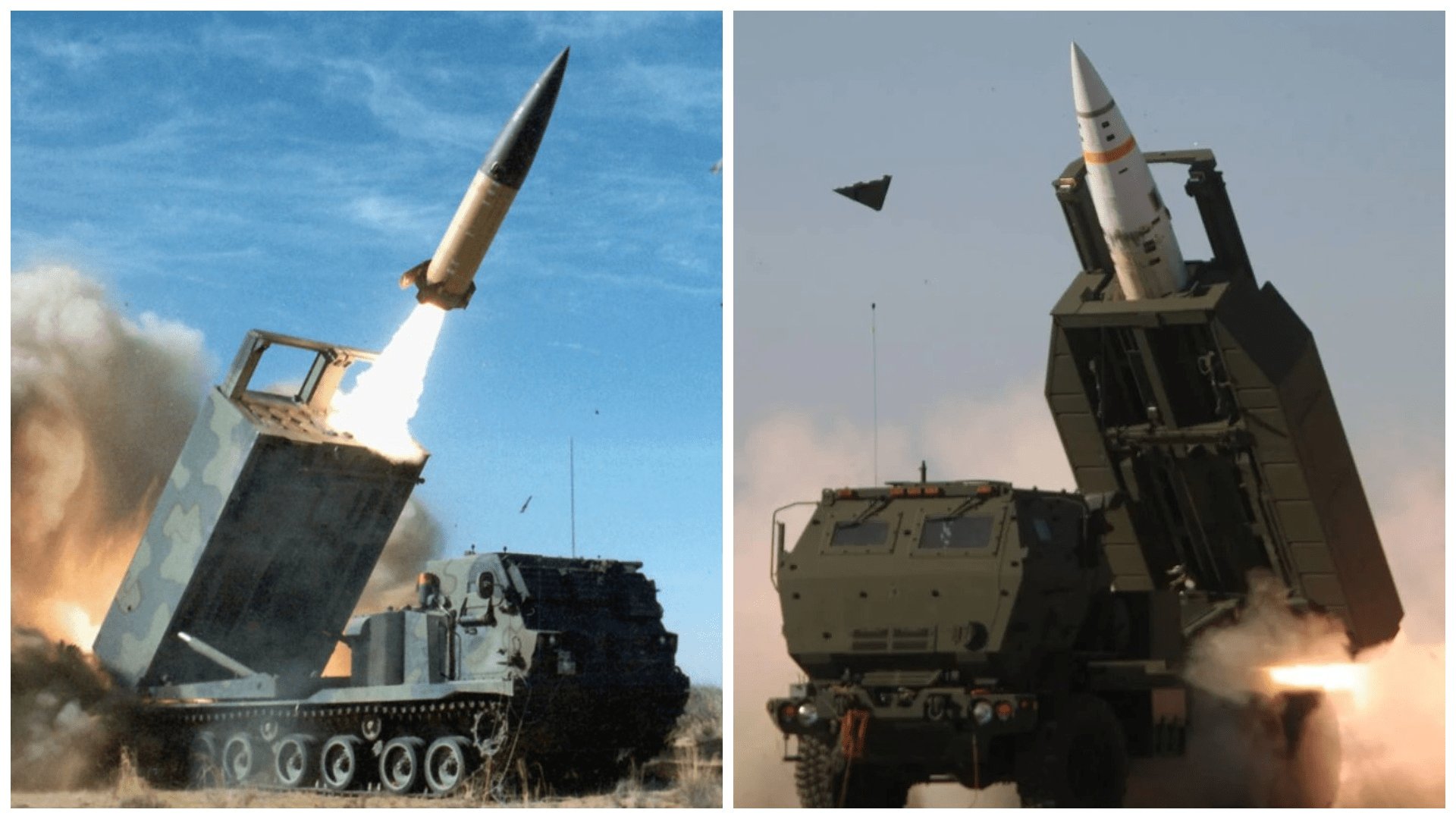
The Ukrainian Armed Forces say that they struck the two airbases at Berdyansk and Luhansk this morning, with claims that “helicopters, ammunition, and equipment of the Russian occupiers” were successfully targeted. While the strikes remain unconfirmed at this stage, there are very strong indications that at least one base did come under some kind of attack, and the implications for Russia could be very significant.
Most intriguingly, wreckage purported to have been found in the aftermath of one of those attacks appears to show M74 submunitions of the kind used in the cluster-warhead version of ATACMS.
In our previous discussions about exactly what ATACMS ballistic missiles can offer Ukraine, we specifically looked at the significance of versions loaded with cluster munitions, as opposed to the variants of these weapons equipped with unitary (single high-explosive) warheads. The conclusion was that the cluster-warhead versions could provide a particular problem for Russian forces — and we may now have seen these weapons used for the first time in this conflict.
In fact, the first two variants of this missile to be introduced both dispensed cluster munitions, carrying either 950 or 275-300 submunitions, with maximum ranges of 102 miles and 186 miles, respectively. The two missiles are known variously as the MGM-140A and B, the Block I and IA, and the M39 and M39A1. It was only later that ATACMS versions entered operational service fitted with unitary warheads.

At the start of the conflict, providing Ukraine with cluster munitions of any kind may have seemed a remote possibility, but the situation changed drastically with the decision to deliver many thousands of cluster artillery shells from U.S. stocks. Over and above the issue of cluster munitions, the idea of sending any kind of ATACMS to Ukraine was also a huge issue for many months, with issues over escalation, among other concerns. Reports then began to show indications that policy was shifting and also that cluster munitions versions of ATACMS specifically were under discussion. In September, according to several media reports, U.S. President Joe Biden promised ATACMS to Ukrainian President Volodymyr Zelensky during his visit to Washington. It’s worth noting that strikes on bases in occupied Ukraine would be in line with stipulated limits on the employment of these missiles, too.
Clearly, a weapon like the cluster-warhead version of ATACMS provides Ukraine with a very significant capability, delivering area effects out to ranges of nearly 200 miles, while using a delivery system that is very hard to defend against. Parked aircraft, especially, would be very obvious targets for these missiles, as would vehicle pools, ammunition dumps, and air defense systems.
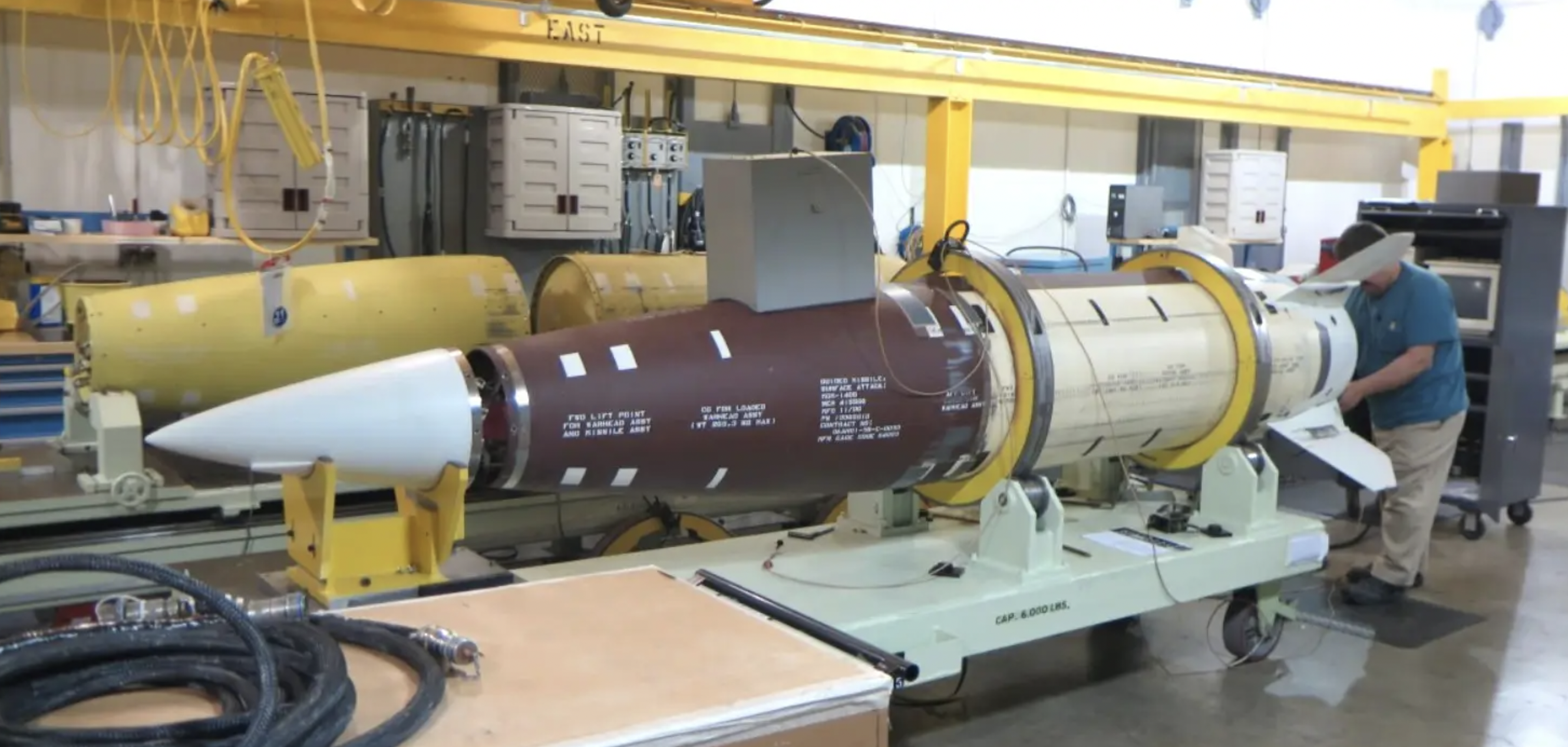
Specifically, the M74 submunition, which appears to have been used in the airbase attacks, is worth looking at more closely. Each M39A1 ATACMS, which employs GPS and inertial navigation, carries 300 of these submunitions. During its terminal attack, the missile executes a stabilized spin, with centrifugal force scattering the bomblets. The size of the area ATACMS effects and the density of the bomblet distribution can be changed by selecting the release height.
Each of the baseball-like M74s has an asymmetrical design to impart yet more spin upon release. On reaching 2,400 revolutions per minute, the fuze is armed. The hundreds of M74s, each carrying a high-explosive blast fragmentation warhead, impact near-simultaneously, creating extensive shrapnel as well as explosive blasts. Personnel and soft targets are especially vulnerable.

In a post to X, formerly Twitter, today, the Ukrainian Armed Forces said they struck the airbases at Berdyansk and Luhansk. No other information was provided about the degree of damage inflicted or how the attacks were actually prosecuted.
Ukraine’s Special Operations Forces command, or SSO, provided further details, including that the operation was code-named Dragonfly. Posting to the Telegram messaging app, the SSO claimed that Dragonfly led to the destruction, at both bases, of nine helicopters of different types, as well as “special equipment that was located at airfields, [an] air defense launcher, [and] ammunition warehouse.”
In this context, “special equipment” could well refer to radar or electronic warfare systems on one of the airfields.
Furthermore, according to the SSO, runways at the facilities were reported damaged and an ammunition depot at Berdyansk airbase detonated sometime before 4:00 a.m. local time.
SSO claims “dozens” of Russian personnel were left dead or wounded in the attacks, with “bodies still being pulled from the rubble.” Again, no mention is made of the type of weapons used.
The airbases at Berdyansk, in the Zaporizhzhia region, in the southeast of Ukraine, and at Luhansk, in the Donbas region, eastern Ukraine, are important hubs for helicopter operations by the Russian Aerospace Forces in Ukraine. As of late last month, for example, satellite imagery showed at least 20 Russian helicopters at Berdyansk alone.
Imagery from NASA’s Fire Information for Resource Management System (FIRMS), which uses satellite observation to provide near real-time data on active fires, suggests that there were several areas burning at Berdyansk airbase at around 3:00 a.m. local time.
At least one video posted to social media, purportedly depicting the attack on Berdyansk airbase shows a string of explosions, and apparently also smoke, which could be consistent with either incoming weapons or the subsequent detonations of ammunition stored there. The video is also punctuated by the sounds of multiple explosions.
Multiple accounts from both sides involved in the conflict suggest that the attacks did take place, adding to the credibility of the Ukrainian Armed Forces’ claims. In particular, various Russian social media channels, including those run by prominent pro-Kremlin military bloggers, reported that that a successful strike was carried out on the airbase at Berdyansk.
In particular, the Fighterbomber channel on Telegram describes the “one of the most serious blows of all time in the Northern Military District, if not the most serious.”
The same channel was seemingly one of the first to claim that the attacks were carried out by the ATACMS short-range ballistic missiles.
As we pointed out in the past, “a couple of ATACMS could be fired at a Russian airbase in Crimea and other occupied areas of Ukraine and destroy all the aircraft sitting on their main aprons.” It now appears possible, at least, that Ukraine may at last have attempted such an attack.
As to the results of the apparent attacks, one Ukrainian military blogger has claimed that as many as 10 helicopters were destroyed on the two airbases, with Berdyansk mainly housing Ka-52 attack helicopters and Mi-8 transport helicopters, plus smaller numbers of Mi-28 attack helicopters and Mi-24 assault transports. That same blogger claims that a Pantsir-S2 air defense system was damaged or destroyed. Interestingly, they also note that the helicopters at Berdyansk were grouped close together, rather than being dispersed further apart, as at Dzhankoi airbase in occupied Crimea. This would only have made them even more vulnerable to an ATACMS attack.
For now, these various claims also need to be treated with extreme caution, while we await satellite imagery to provide confirmation of the scale of the damage.
Whatever turns out to have happened at Berdyansk and Luhansk airbases, it’s clear that Ukraine is consistently increasing its options for launching long-range strikes against Russian targets, both on Ukrainian territory and outside its borders.
Berdyansk, for example, is located around 60 miles from the front lines and appears to have been struck by Ukraine before. Indeed, in the first weeks of the war, in March 2022, a Russian Navy landing ship was destroyed in an attack initially reported to be by a Ukrainian Tochka-U short-range ballistic missile. You can read more about that incident in our story from the time here.
While the later ATACMS can hit targets at about 200 miles away, even the locally produced Vilkha-M, a modified Soviet-era multiple launch rocket system (MLRS) artillery rocket has a range of 68 miles, with plans announced to increase this to 93 miles.
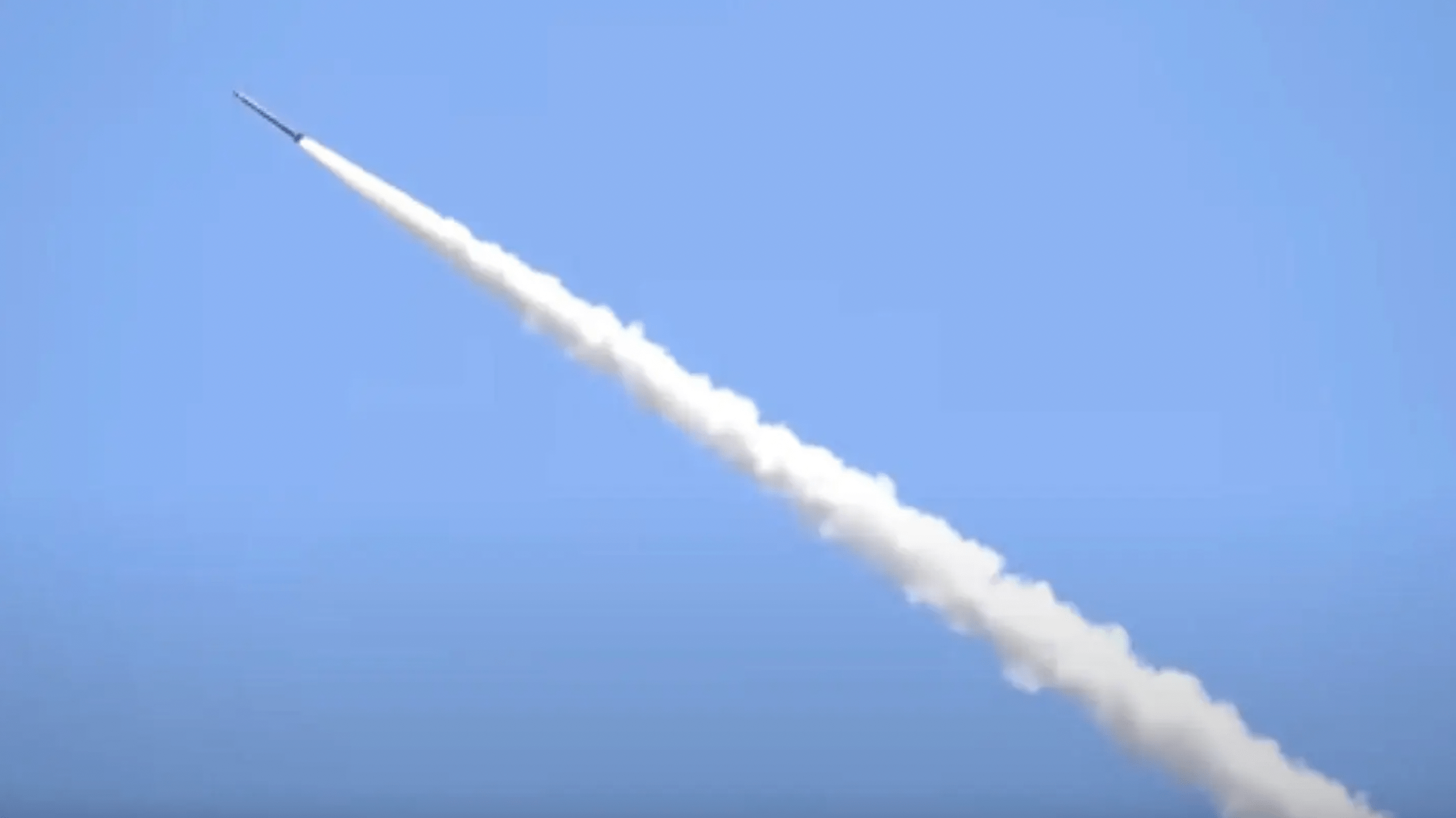
Ukraine was also due to receive the U.S.-made Ground Launched Small Diameter Bomb (GLSDB) sometime this fall. This weapon has a range of around 94 miles.

Then there are the air-launched cruise missiles — the U.K.-supplied Storm Shadow and the very similar SCALP-EG provided by France — that are now in the Ukrainian inventory, and which have seen notable use, including striking targets in occupied Crimea. In its export configuration, Storm Shadow has an officially stated range of over 155 miles, although the British examples are understood to have a much greater range, in the region of 350 miles. Since these missiles are air-launched (from Ukrainian Air Force Su-24 Fencer strike/reconnaissance aircraft) they are able to strike targets at even greater ranges, too, although they are not permitted to be used against targets within Russia’s borders.
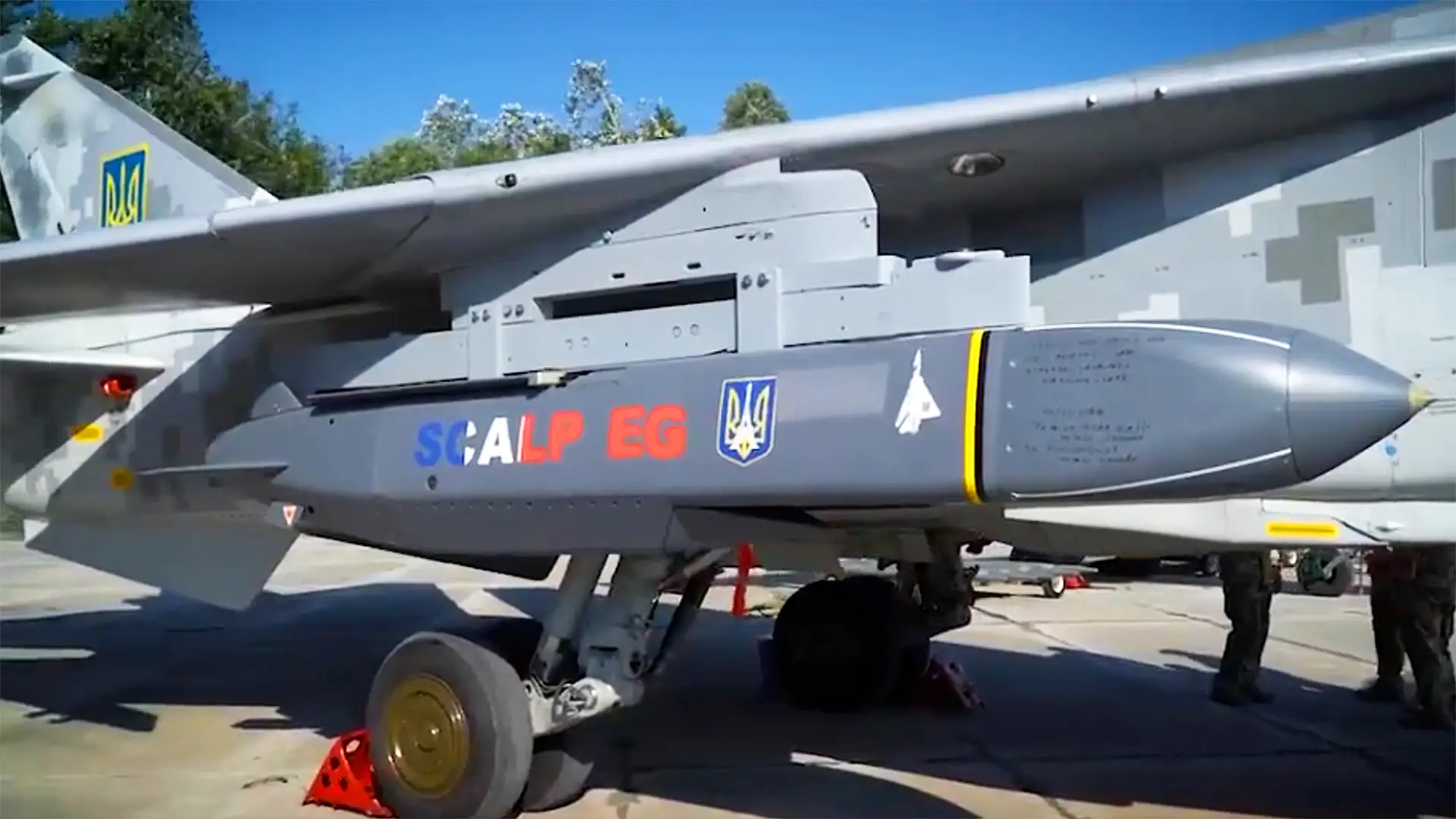
Ukraine now also has a land-attack cruise missile of its own, with a modification of its Neptune anti-ship missile. Ukrainian officials told The War Zone that the converted Neptune has a range of around 250 miles and a payload of more than 770 pounds, which would make it the longest-range and largest payload ground attack missile or rocket built by Ukraine — at least that we know about.
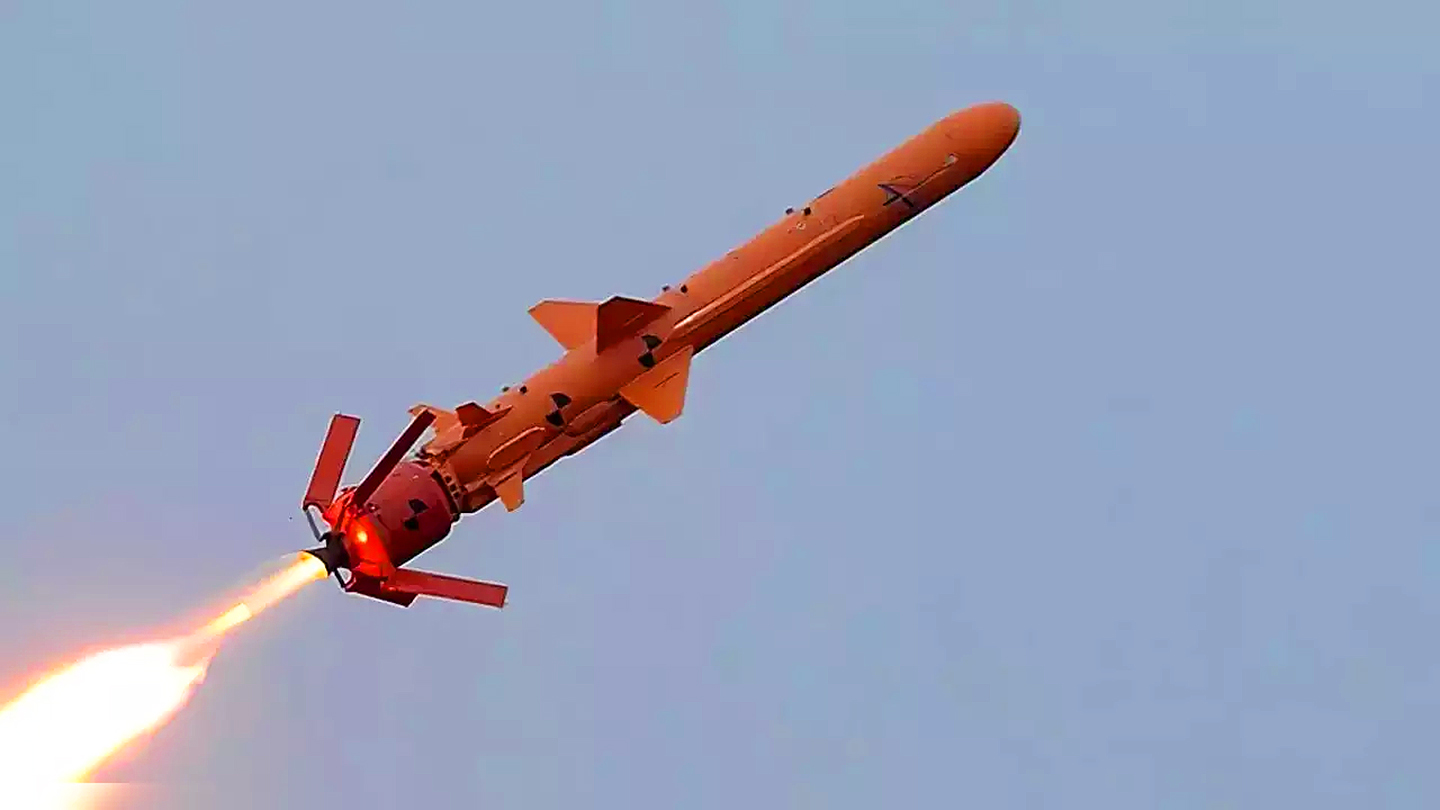
In the past, Ukraine has also repurposed Soviet-era jet surveillance drones, fitting them with warheads and sending them on one-way missions as extemporized cruise missiles. Other long-range drone designs have also been used in a similar way, striking Russian targets as far away as Moscow.
Even without ATACMS, Ukraine has a range of options for attacking targets like the airbases at Berdyansk and Luhansk. Providing these attacks did take place, as now seems likely, they do once again raise questions about the vulnerability of these critical installations — and others like them — to air attack. Repeatedly now, Ukraine has managed to press home attacks of different kinds against Russian airbases, not only on occupied territory but also deep within Russia’s own borders. Of course, adding ATACMS to the equation only makes the future defense against these sorts of attacks harder still for Russia.
For the time being, it’s too early to say exactly what happened at Berdyansk and Luhansk airbases, but this appears to be a developing story and one that we will follow closely. If it really is the case that ATACMS has been used in these attacks, the implications will likely be very significant indeed.
UPDATE: 11:53 AM EST—
More evidence that ATACMS was used is emerging. Images show wreckage of an MGM-140A ATACMS Block I, the first shorter-ranged but more heavily laden with submunitions ATACMS we mentioned in the story. While we cannot confirm exactly where these images came from, they are compelling evidence that an ATACMS was used. Considering the concern of how precious the limited U.S. stockpile of these missiles is, sending the oldest and least capable ones makes sense, especially as many targets do not require the later versions nearly 200 mile range.
Additional video appears to show helicopters on fire at Berdyansk Airfield.
It’s also worth looking back to our interview last month of Ukraine’s spymaster, Lt. Gen. Kyrylo Budanov, and what he said about potential ATACMS transfers to Ukraine. The interview occurred before Biden promised at least a handful to Ukraine. Here is that excerpt:
TWZ: When you meet with U.S. officials are you going to ask for [Army Tactical Missile System] ATACMS? And what are you going to say to convince them to provide ATACMS?
KB: I think that this issue will be raised.
TWZ: What’s your argument for them?
KB: My argumentation is very simple. The majority of [Russian] command posts and logistic storages are beyond the distance of 85 kilometers (about 50 miles) which is the maximum range for our current [Guided Multiple Launch Rocket Systems (GMLRS) munitions] – for [M142 High Mobility Artillery Rocket Systems or] HIMARS that we have. The Russians just place command posts and other things beyond those distances so we don’t have anything to reach them there. And the situation is the same with Russian aviation at the airfields. Fighting Russian aviation using air defense systems is very costly and ineffective. Aviation should be taken out at the air bases.
TWZ: Are you talking about airfields in Russia?
KB: No, we’re talking about the airfields in the occupied areas of Ukraine.
TWZ: Like those bases in Crimea.
KB: Crimea is Ukraine.
TWZ: On Tuesday, a U.S. official said the new Precision Strike Missile (PrSM), a replacement for ATACMS, is coming online soon and could potentially open up the availability of ATACMS for Ukraine. Do you have a sense of how many ATACMS the U.S. has that they can give you?
KB: So let’s wait for the official announcements to be made. There are still different ways how this situation can turn out so let’s wait for [the official announcement] but I can say conditionally that if it’s 100 missiles, this won’t change the situation.
TWZ: You need thousands?
KB: At least hundreds.
TWZ: Do you think you will return to Ukraine with good news about ATACMS?
KB: I always hope for the better. We’ll do everything to make that happen.
UPDATE: 3:10 PM EST—
President Zelensky has now confirmed that Ukraine has recieved ATACMS and has used it against Russian forces in Berdyansk and Luhansk, the same target areas as those discussed above.
Video of ATACMS being fired by Ukraine has also surfaced:
We have heard nothing from Russia yet on this development.
Contact the author: thomas@thedrive.com
